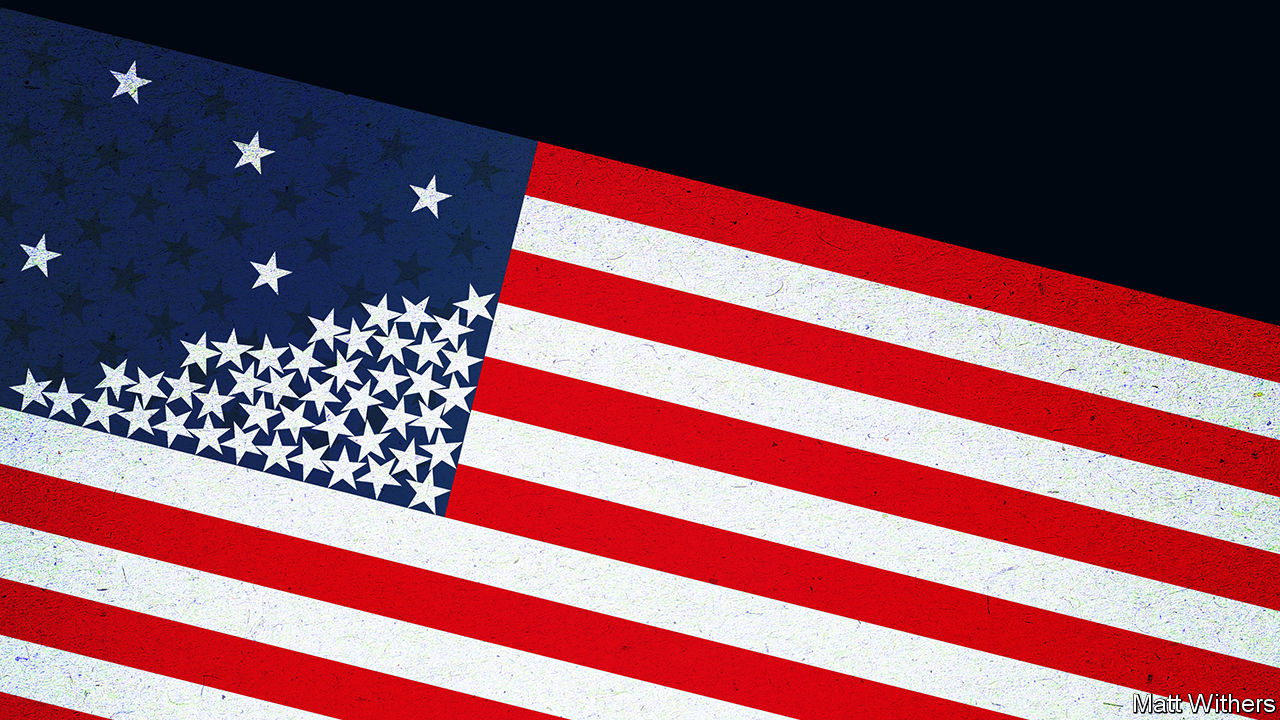
EVERY system for converting votes into power has its flaws. Britain suffers from an over-mighty executive; Italy from chronically weak government; Israel from small, domineering factions. America, however, is plagued by the only democratic vice more troubling than the tyranny of the majority: tyranny of the minority.
This has come about because of a growing division between rural and urban voters. The electoral system the Founders devised, and which their successors elaborated, gives rural voters more clout than urban ones. When the parties stood for both city and country that bias affected them both. But the Republican Party has become disproportionately rural and the Democratic Party disproportionately urban. That means a red vote is worth more than a blue one.
The consequences are dramatic. Republicans hold both the houses of Congress and the White House. But in the three elections in 2012-16 their candidates got just 46% of the two-party vote for the Senate, and they won the presidential vote in 2016 with 49%. Our voting model predicts that, for Democrats to have a better than 50% chance of winning control of the House in November’s mid-term elections, they will need to win the popular vote by around seven percentage points. To put that another way, we think the Republicans have a 0.01% chance of winning the popular vote for the House. But we estimate their chance of securing a majority of congressmen is about a third. In no other two-party system does the party that receives the most votes routinely find itself out of power (see Briefing).
This imbalance is partly by design. The greatest and the smallest states each have two senators, in order that Congress should represent territory as well as people. Yet the over-representation of rural America was not supposed to affect the House and the presidency. For most of the past 200 years, when rural, urban and suburban interests were scattered between the parties, it did not. Today, however, the 13 states where people live closest together have 121 Democratic House members and 73 Republican ones, whereas the rest have 163 Republicans and just 72 Democrats. America has one party built on territory and another built on people.
The bias is deepening. Every president who took office in the 20th century did so having won the popular vote. In two of the five elections for 21st-century presidents, the minority won the electoral college. By having elected politicians appoint federal judges, the American system embeds this rural bias in the courts as well. If Brett Kavanaugh, whom President Donald Trump nominated this week, joins the Supreme Court, a conservative court established by a president and Senate who were elected with less than half the two-party vote may end up litigating the fairness of the voting system.
This bias is a dangerous new twist in the tribalism and political dysfunction that is poisoning politics in Washington. Americans often say such partisanship is bad for their country (and that the other lot should mend their ways). The Founding Fathers would have agreed. George Washington warned that “the alternate domination of one faction over another, sharpened by the spirit of revenge…is itself a frightful despotism”.
As a component of partisanship, the built-in bias is obviously bad for Democrats. But in the long run it is bad for America as a whole, including Republicans. When lawmaking is paralysed, important work, such as immigration and entitlement reform, is too hard. The few big laws that are approved, like Barack Obama’s health-care reform or Mr Trump’s corporate-tax cuts, pass on party-line votes. That emboldens the opposition to reverse or neuter them when they take power. Meanwhile, the task of resolving the most divisive political issues often falls to the courts. The battle over Mr Kavanaugh’s confirmation will be a proxy war over issues, like abortion and health insurance, better suited to the legislature.
Some may ask why Democrats do not return to positions that appeal to rural voters (see our special report). Recall how Mr Obama won the presidency opposing gay marriage and Bill Clinton built a coalition in the centre-ground. But rancorous political disputes—over guns, abortion and climate change—split so neatly along urban-rural lines that parties and voters increasingly sort themselves into urban-rural tribes. Gerrymandering and party primaries reward extremists, and ensure that, once elected, they seldom need fear for their jobs. The incentives to take extreme positions are very powerful.
Bitter partisanship, ineffective federal government and electoral bias poison politics and are hard to fix. Changing the constitution is hard—and rightly so. Yet the voting system for Congress is easier to reform than most people realise, because the constitution does not stipulate what it should be. Congress last voted to change the rules in 1967.
Second thoughts about first-past-the-post
The aim should be to give office-seekers a reason to build bridges with opponents rather than torch them. If partisanship declined as a result, so would pressure on voters to stick to their tribe. That could make both parties competitive in rural and urban areas again, helping to restore majority rule.
One option, adopted in Maine this year and already proposed in a bill in Congress for use nationwide, is “ranked-choice voting” (RCV), in which voters list candidates in order of preference. After a first count, the candidate with the least support is eliminated, and his or her ballots are reallocated to those voters’ second choice. This continues until someone has a majority. Candidates need second- and third-choice votes from their rivals’ supporters, so they look for common ground with their opponents. Another option is multi-member districts, which were once commonplace and still exist in the Senate. Because they aggregate groups of voters, they make gerrymandering ineffective.
Voting reform is not the whole answer to partisanship and built-in bias, but it would help. It is hard, but not outlandish. To maintain the trust of all Americans, the world’s oldest constitutional democracy needs to reform itself.
This article appeared in the Leaders section of the print edition under the headline "American democracy’s built-in bias"





No comments:
Post a Comment